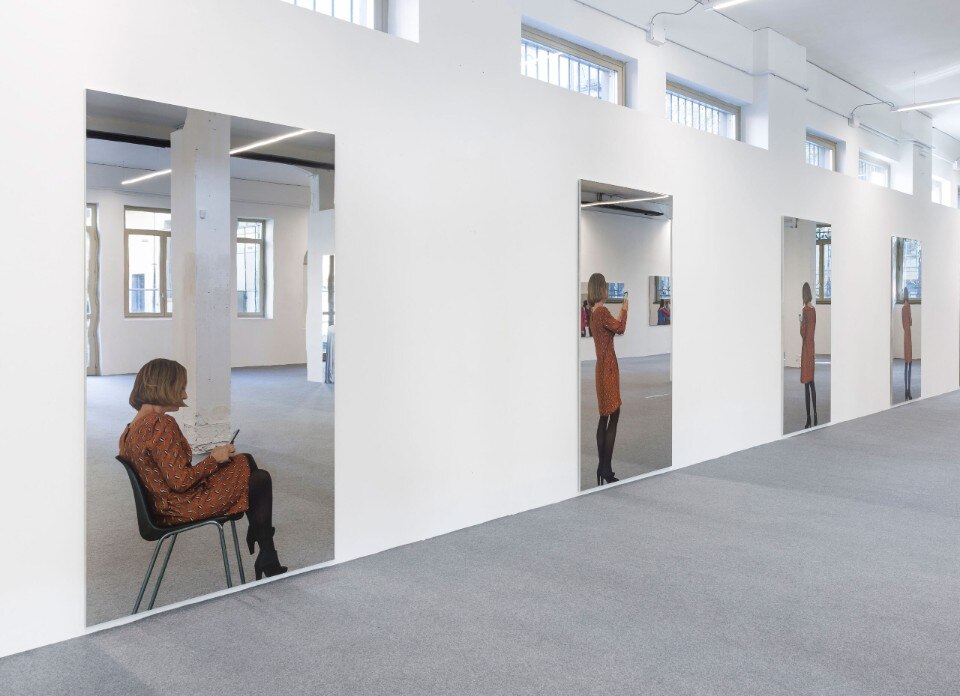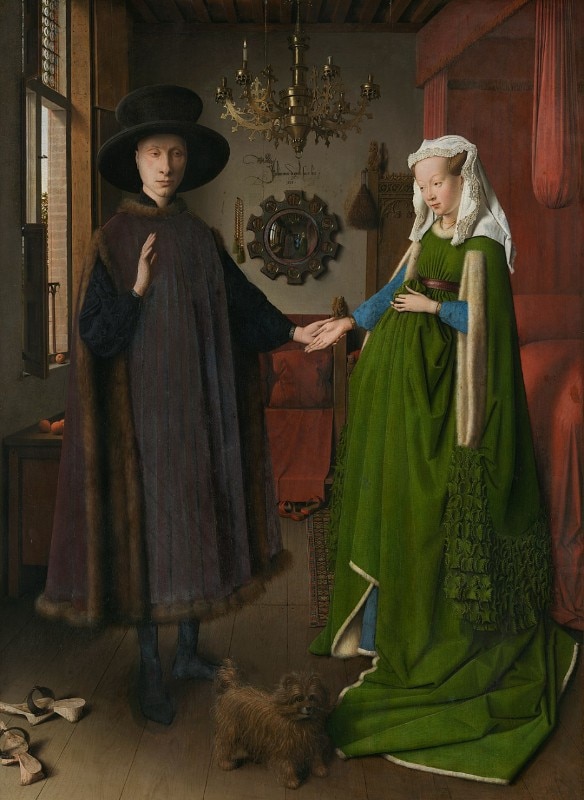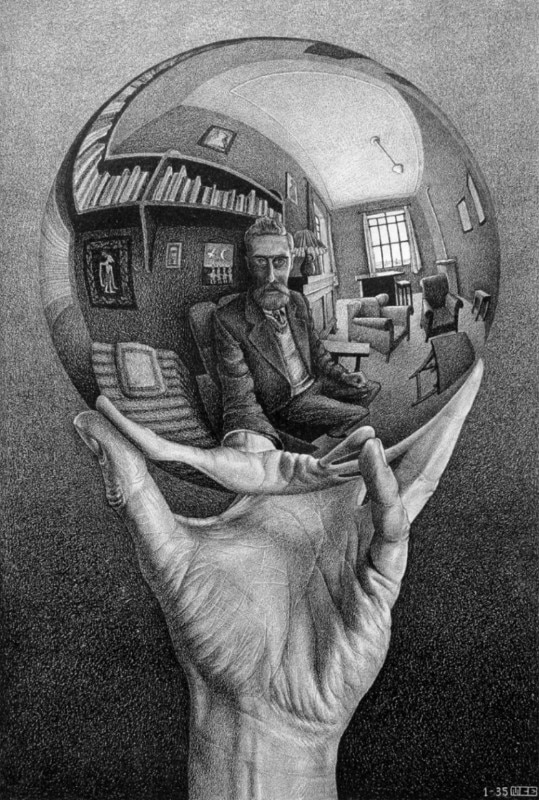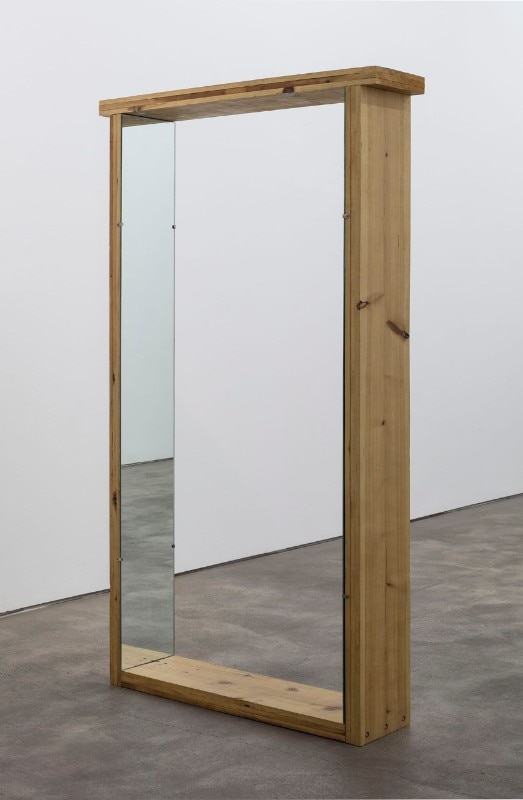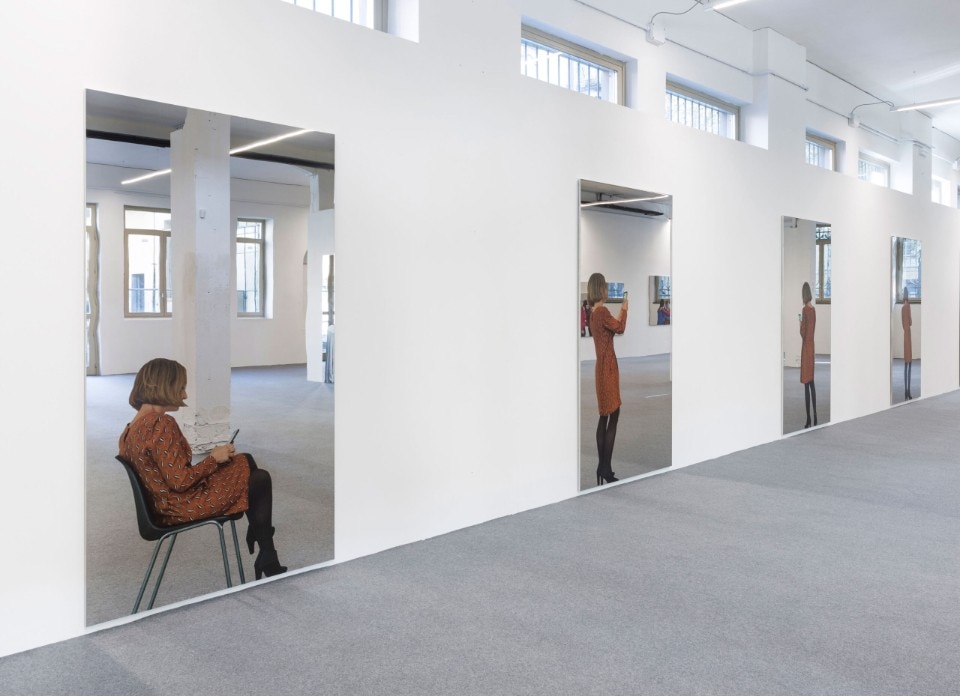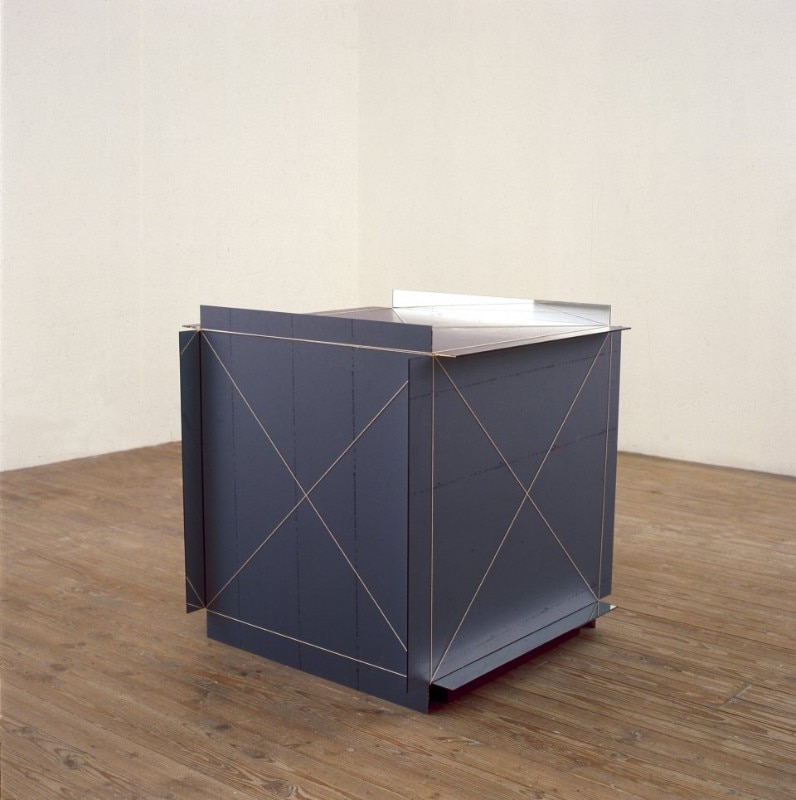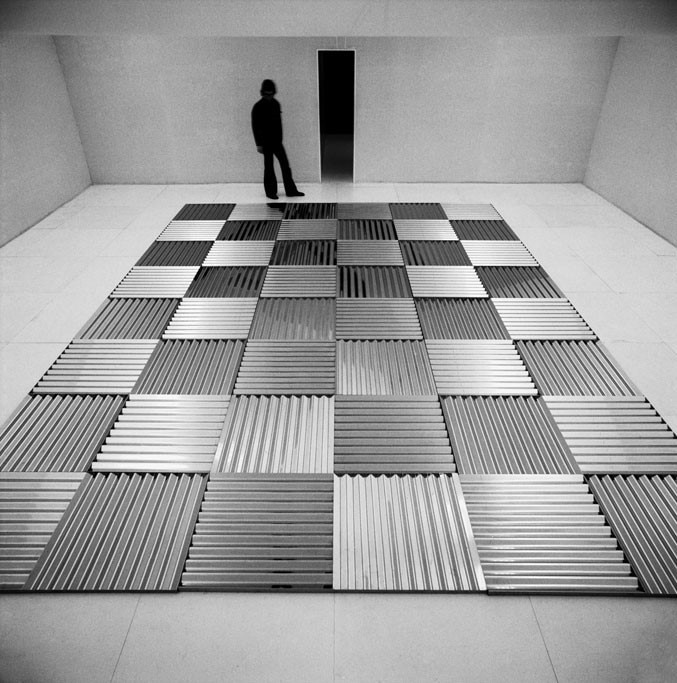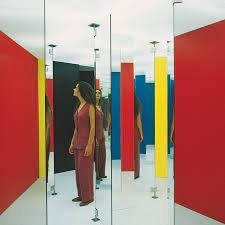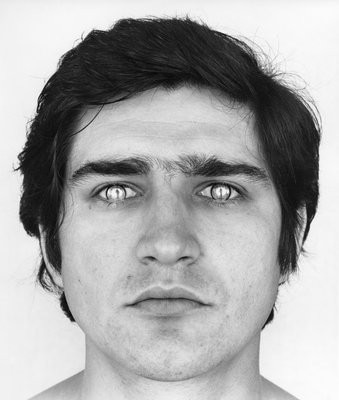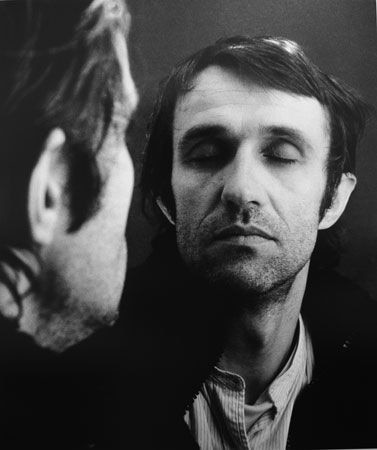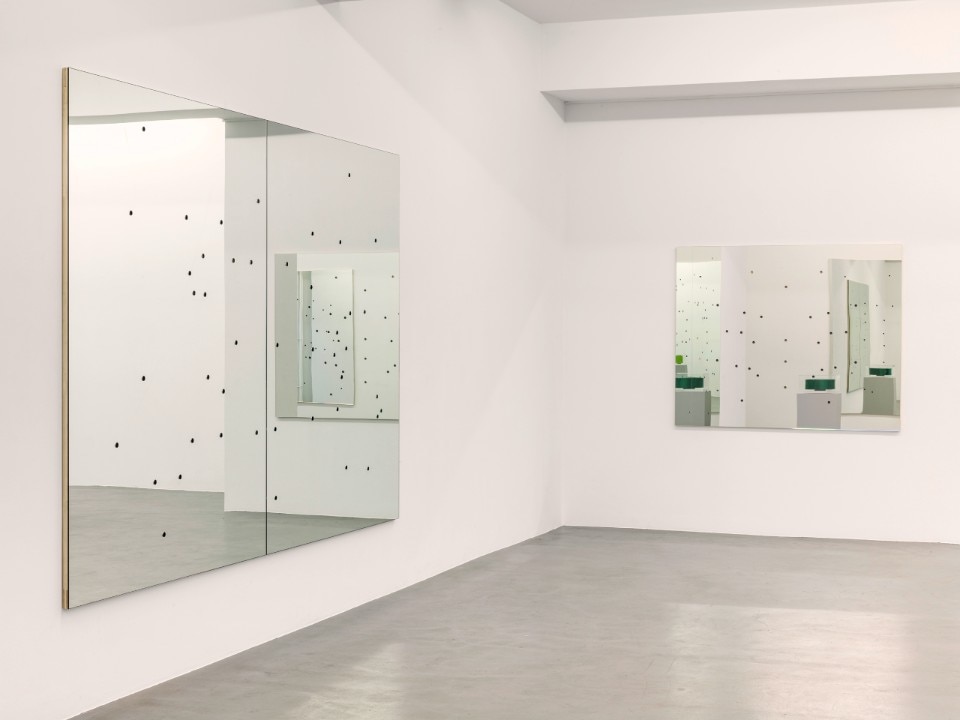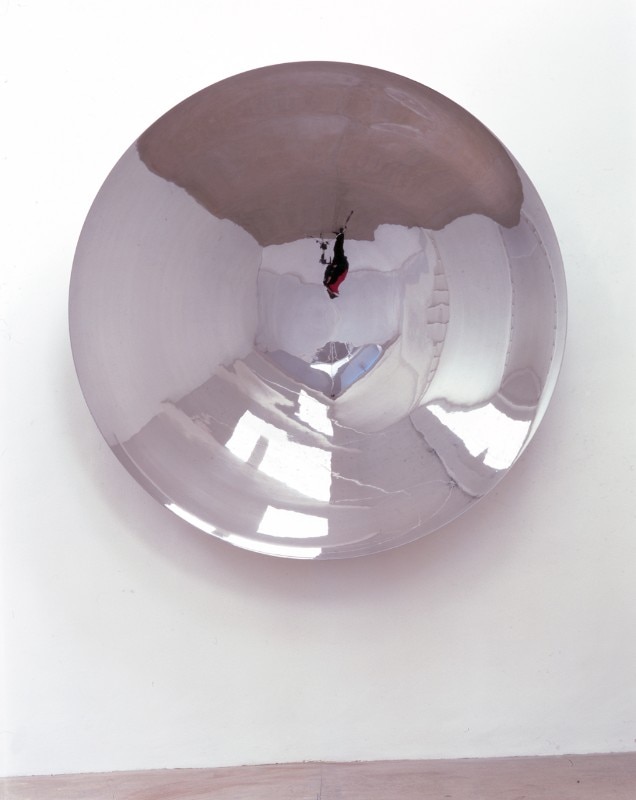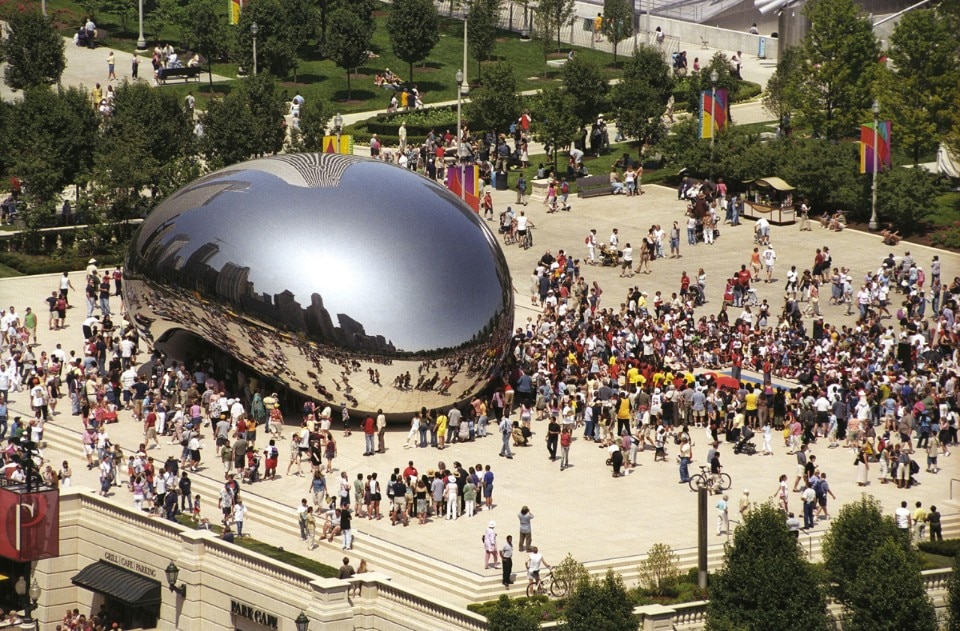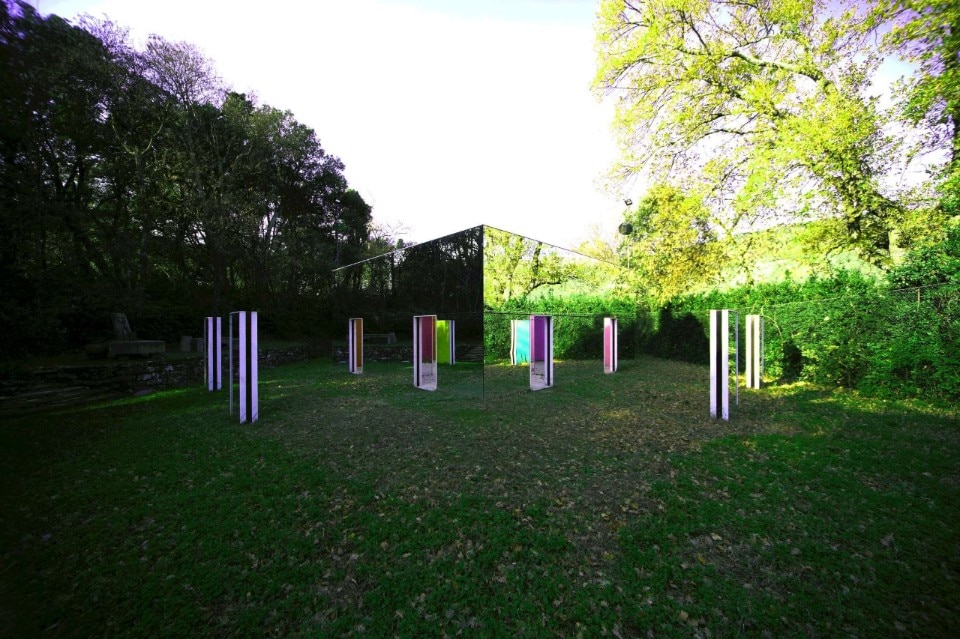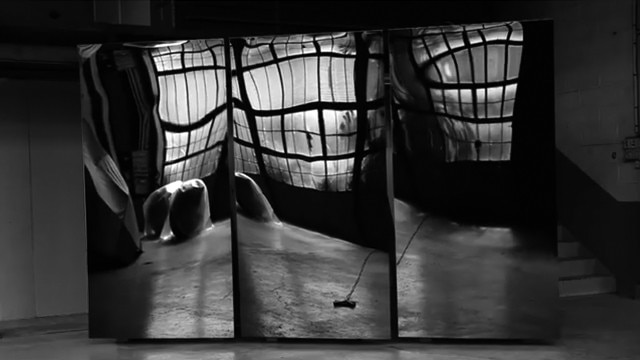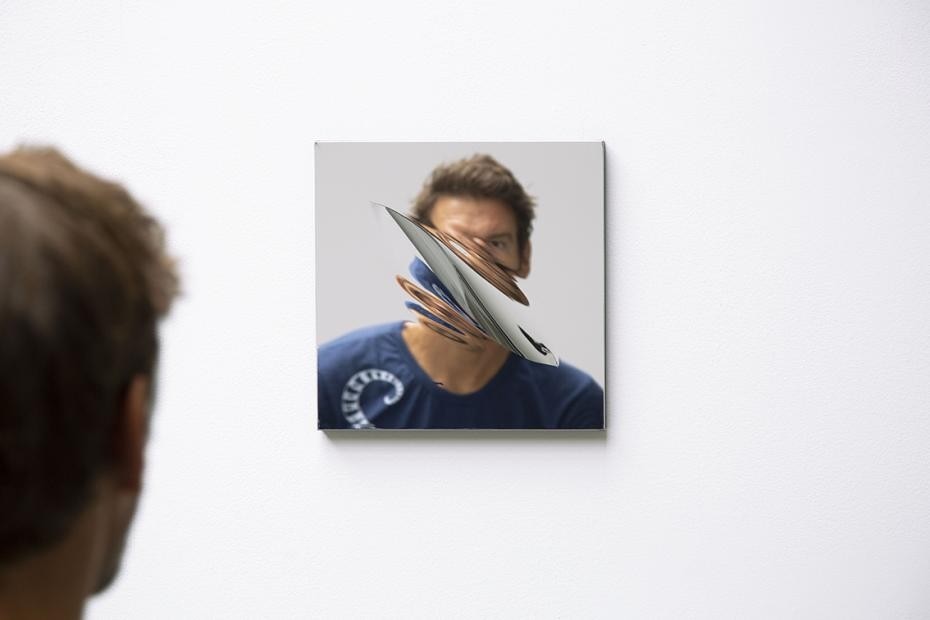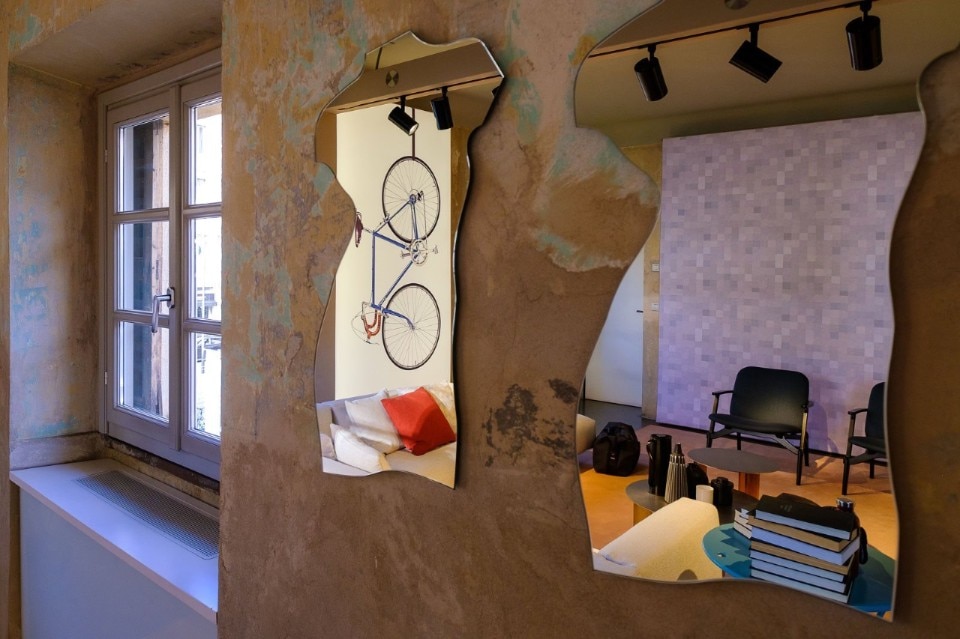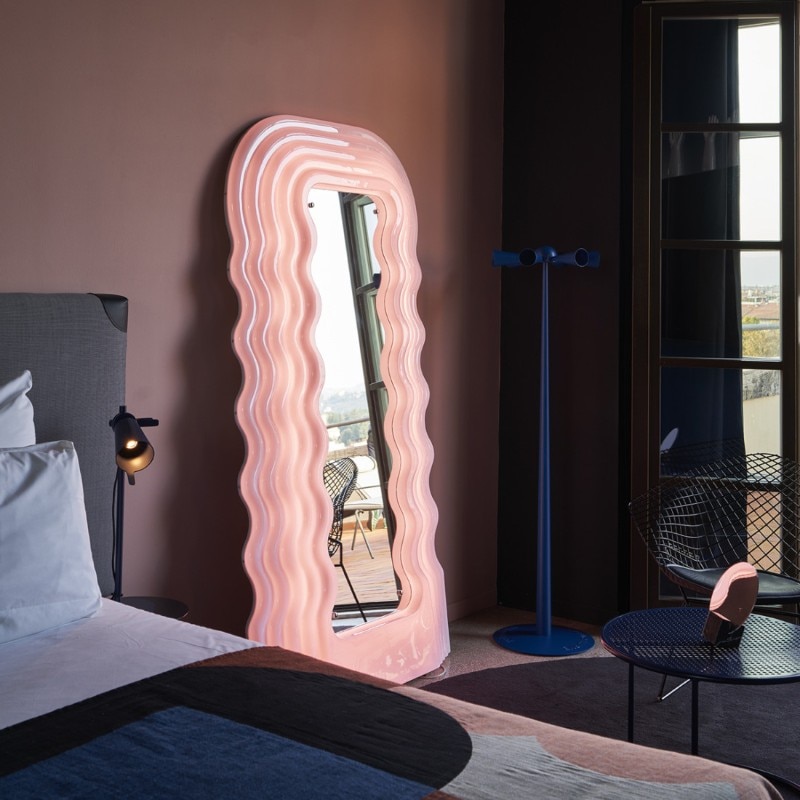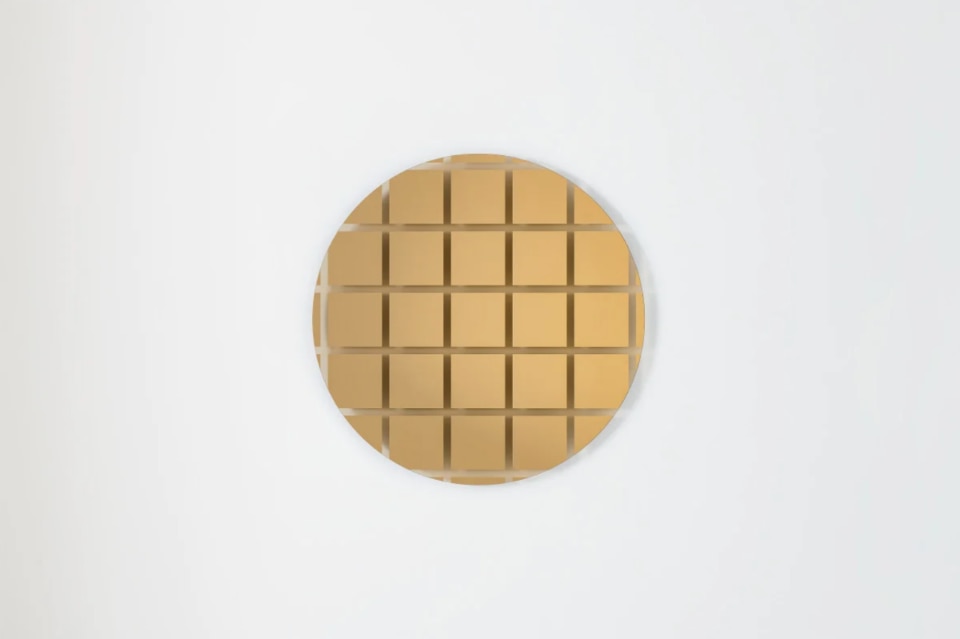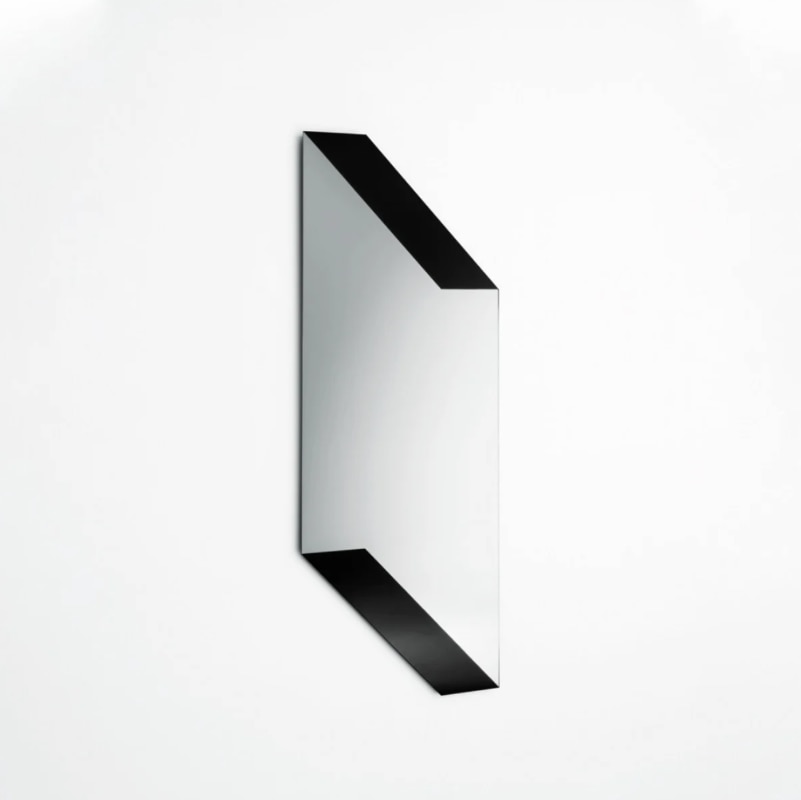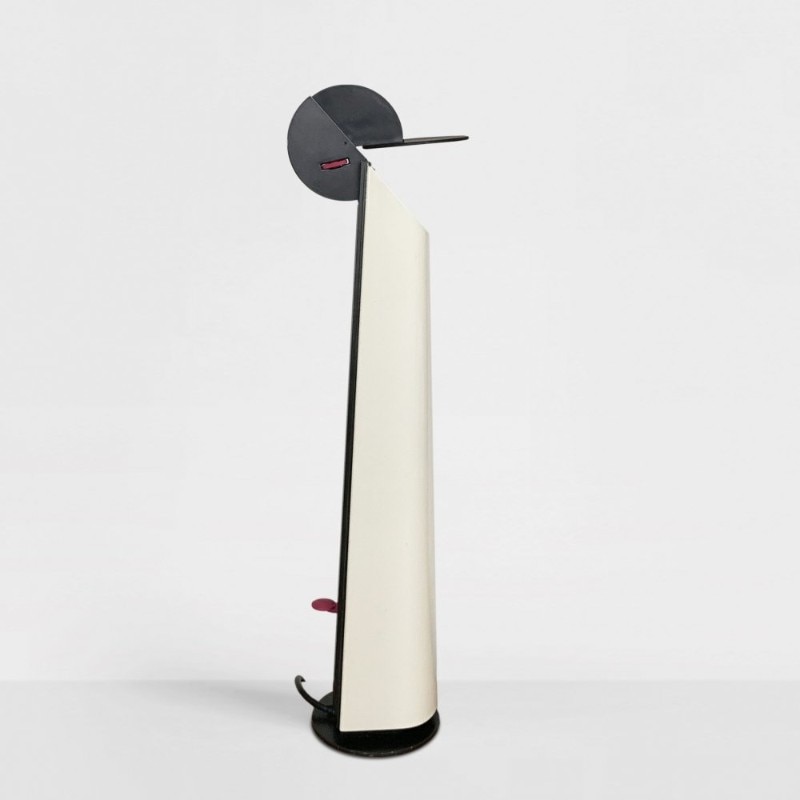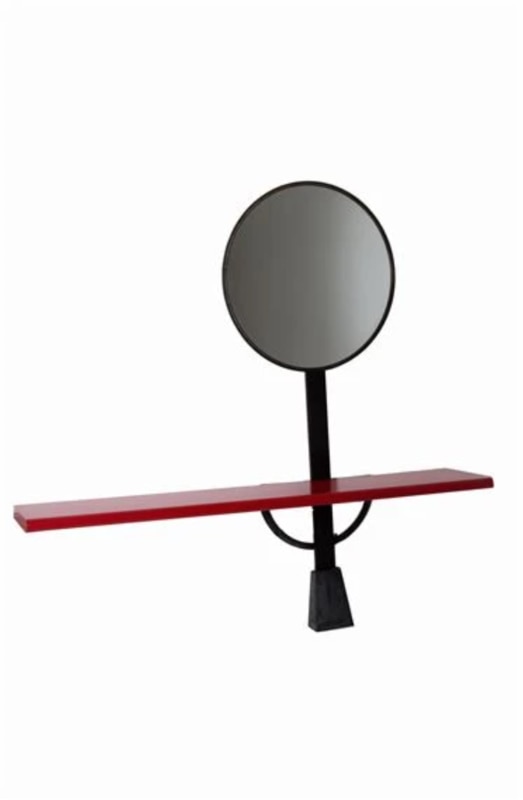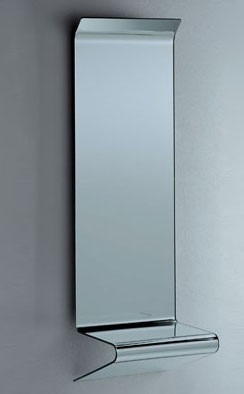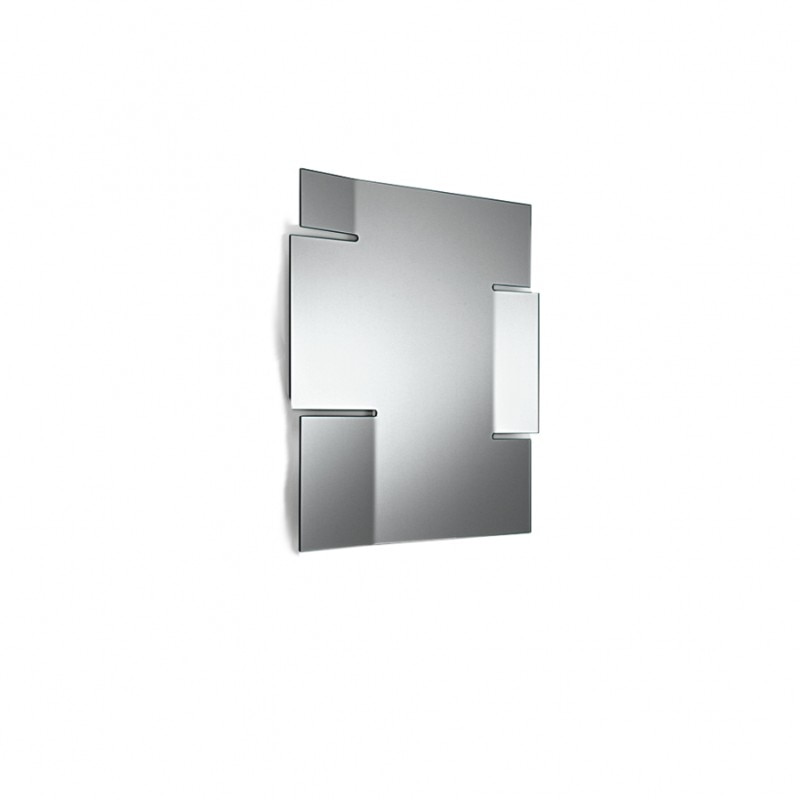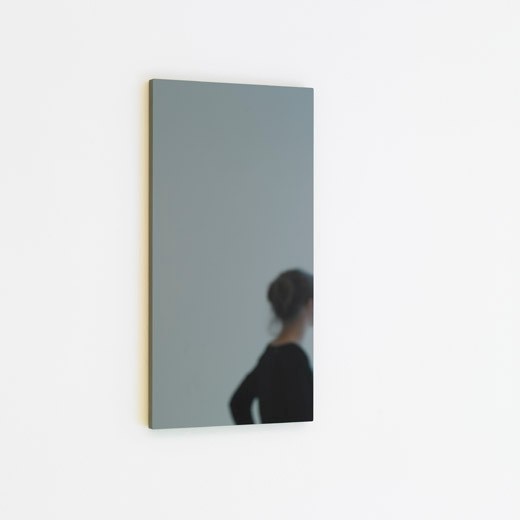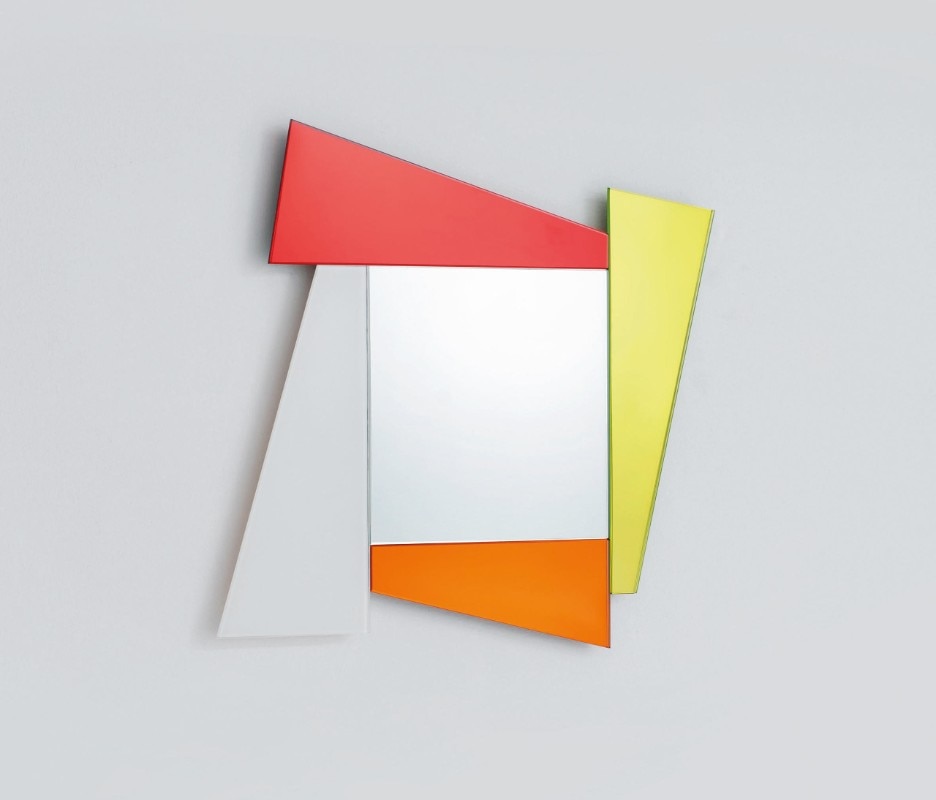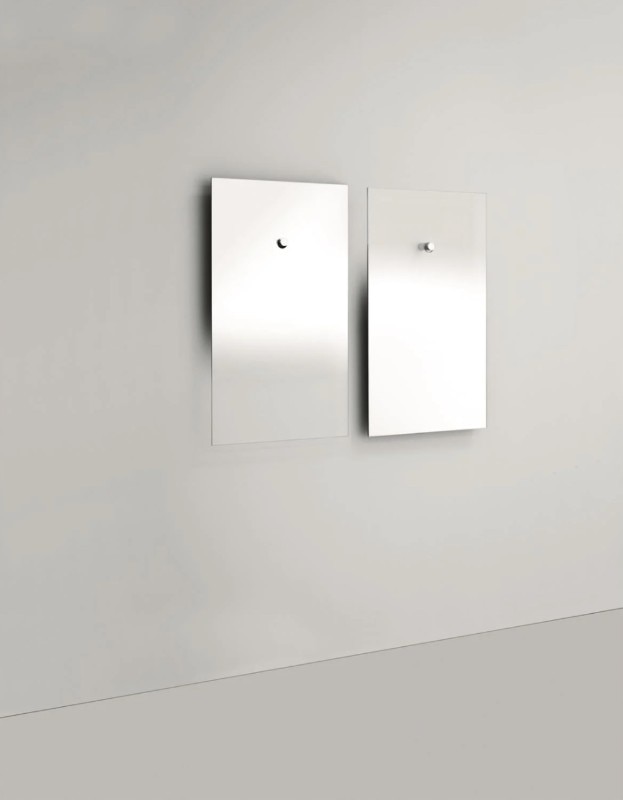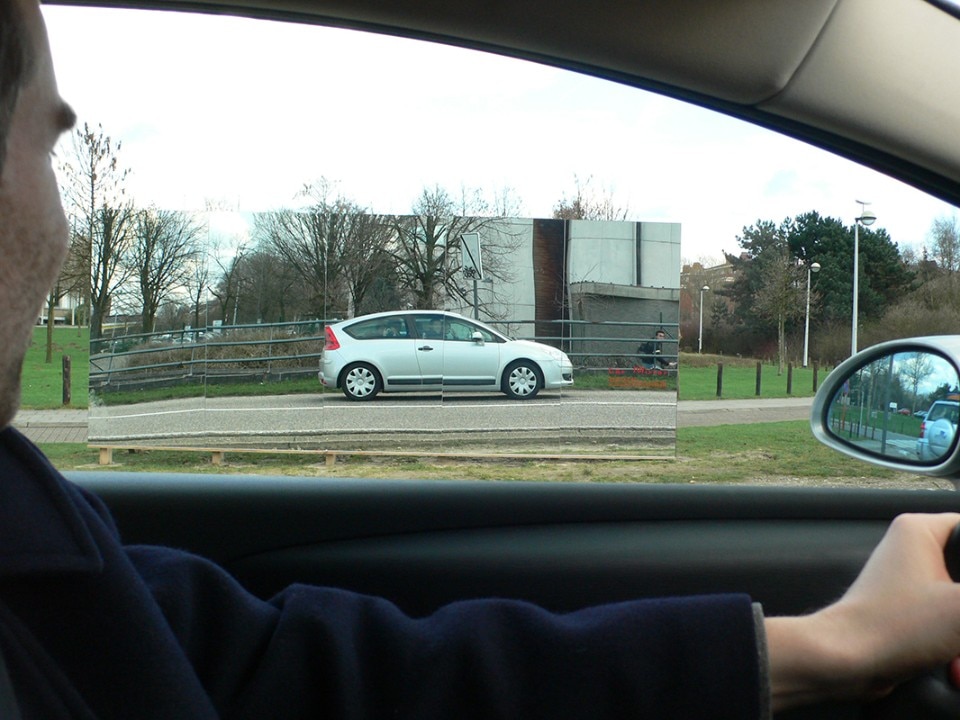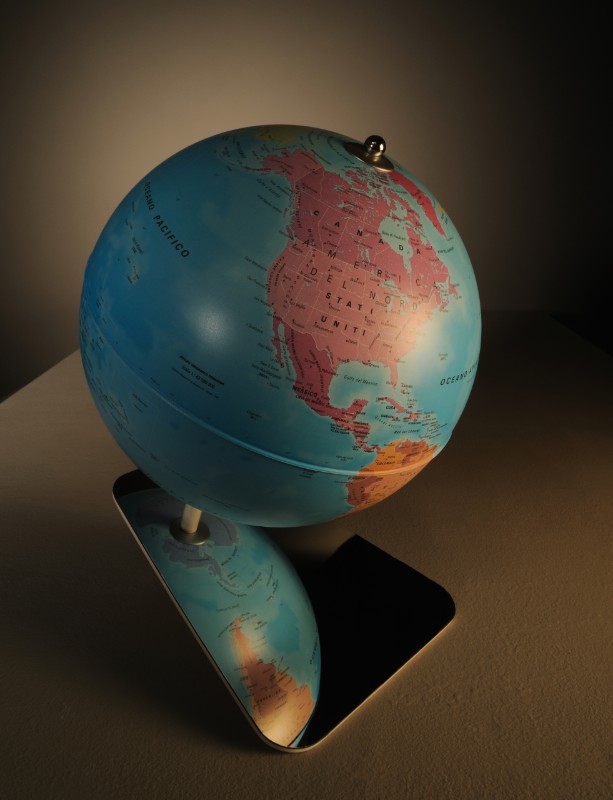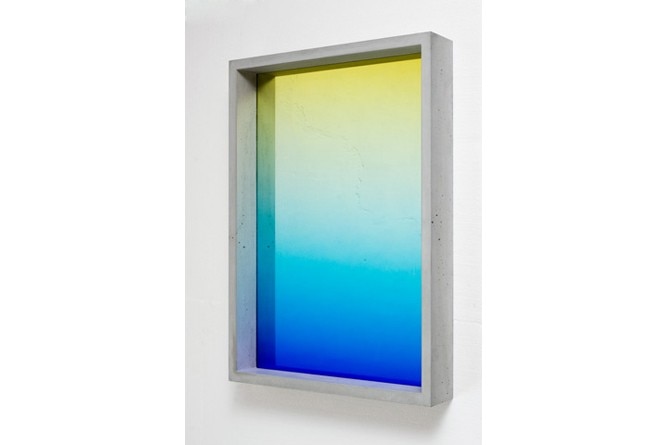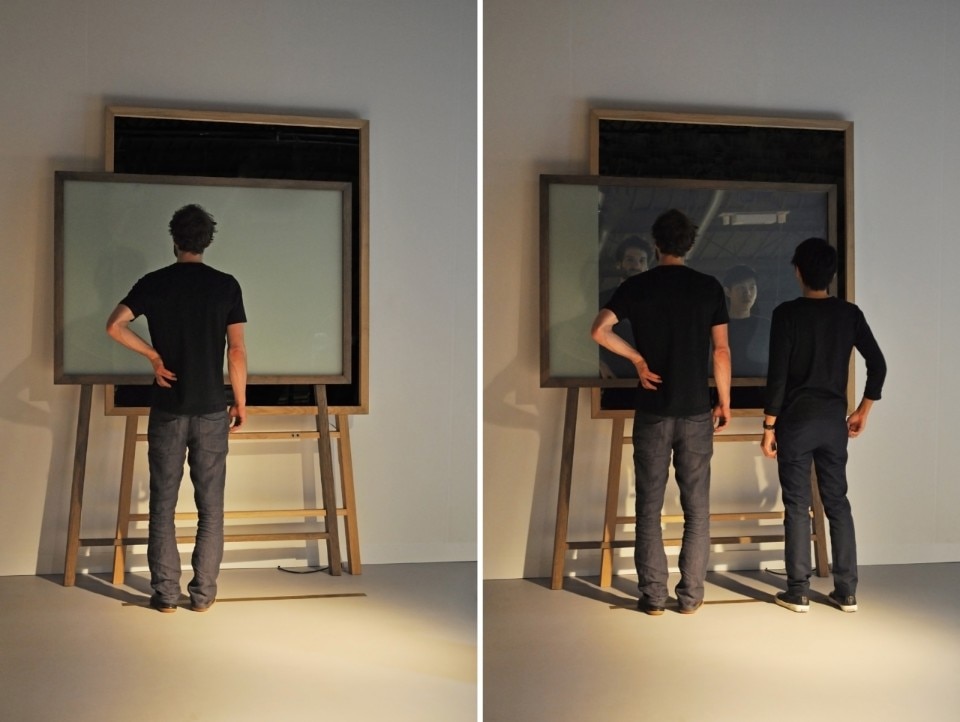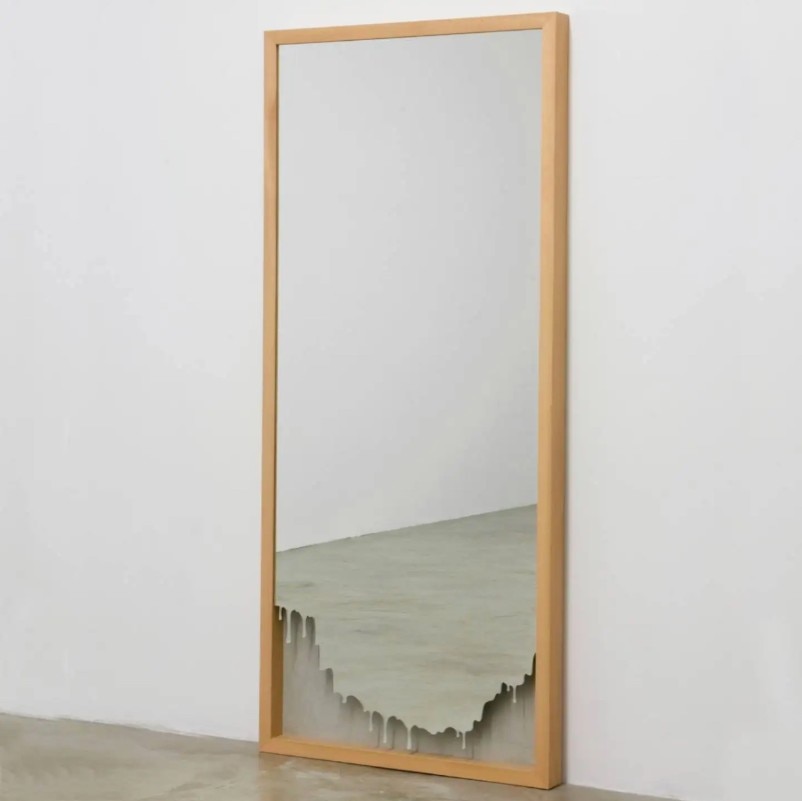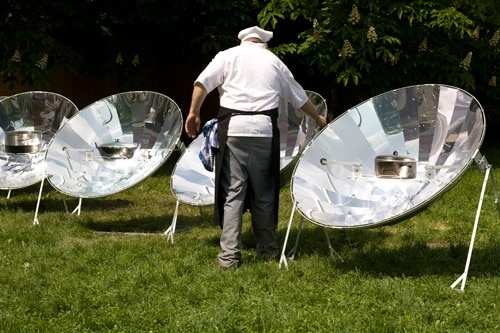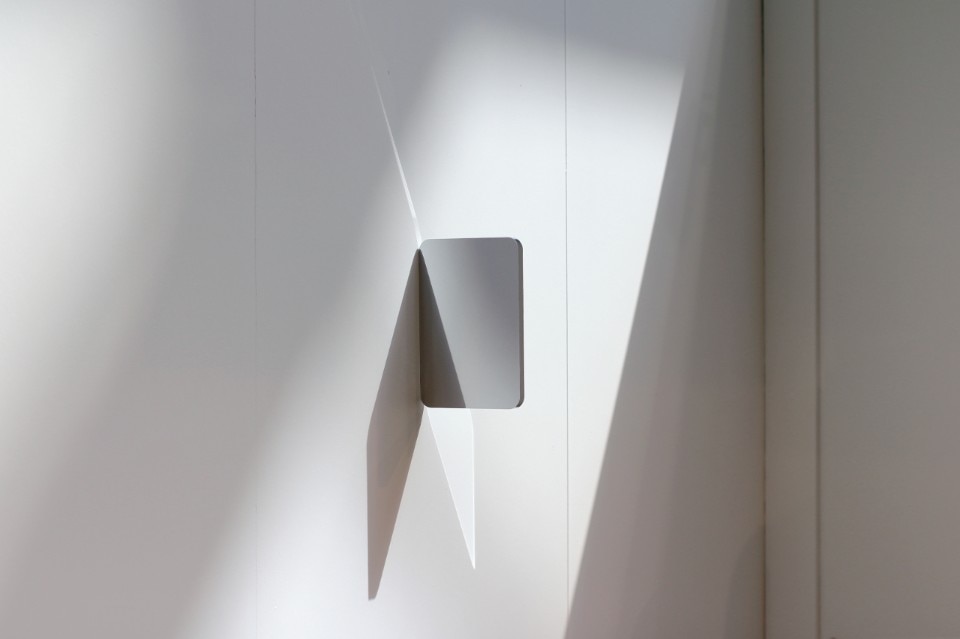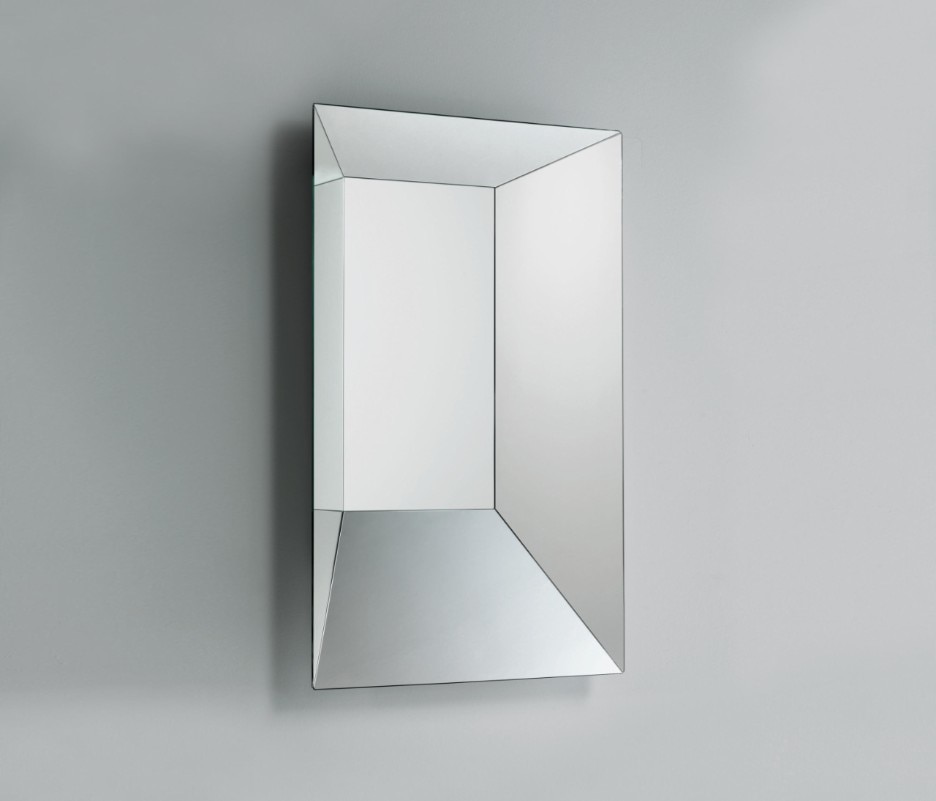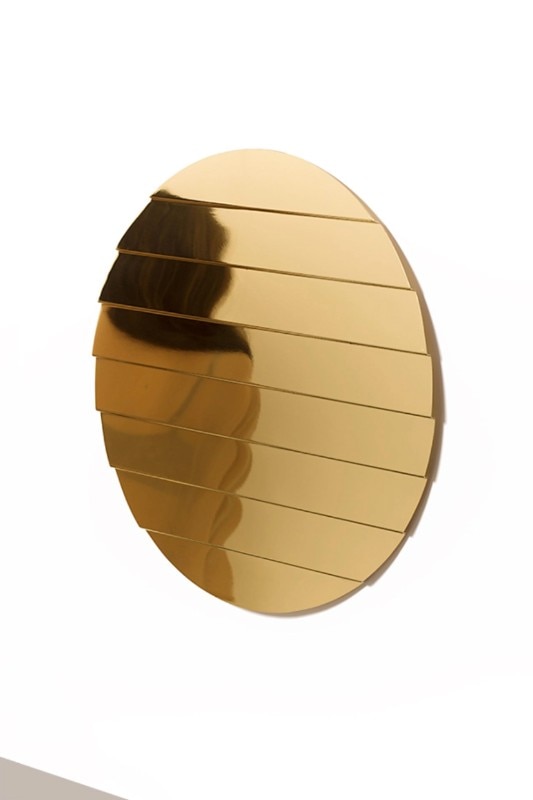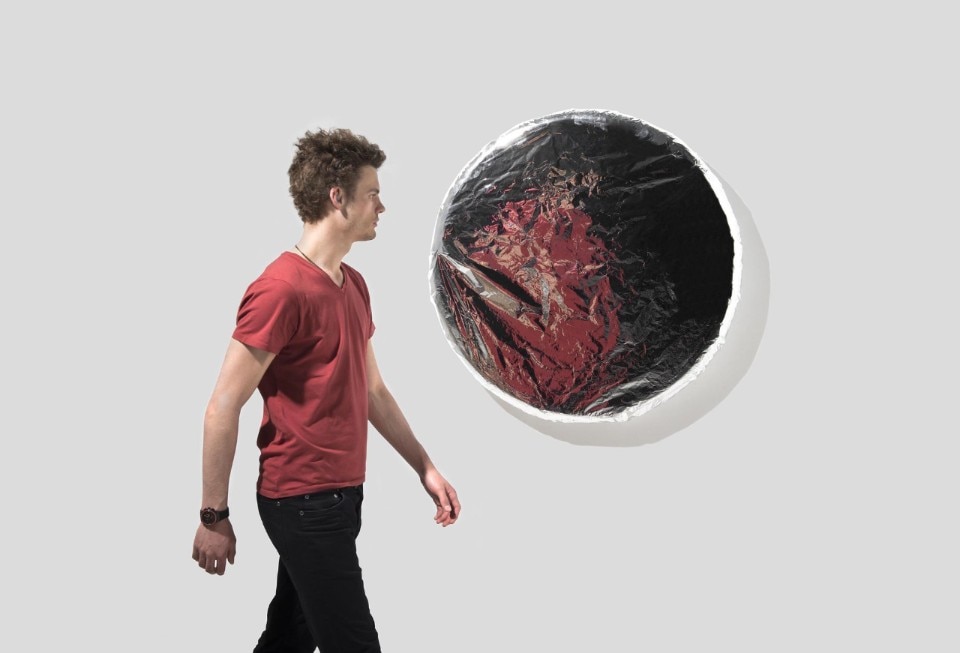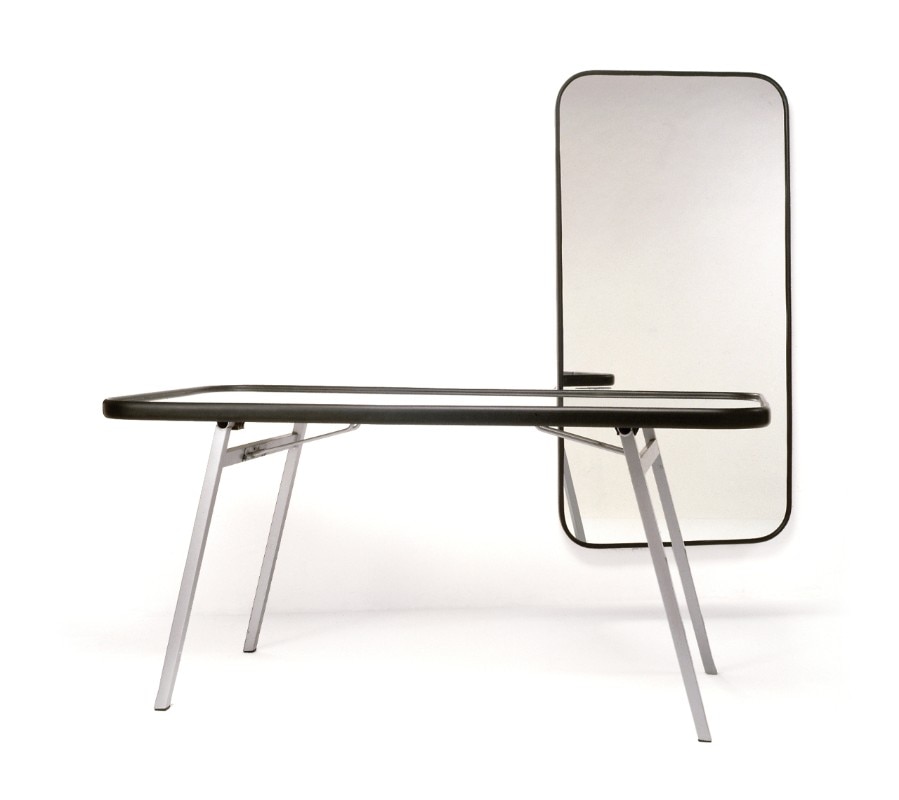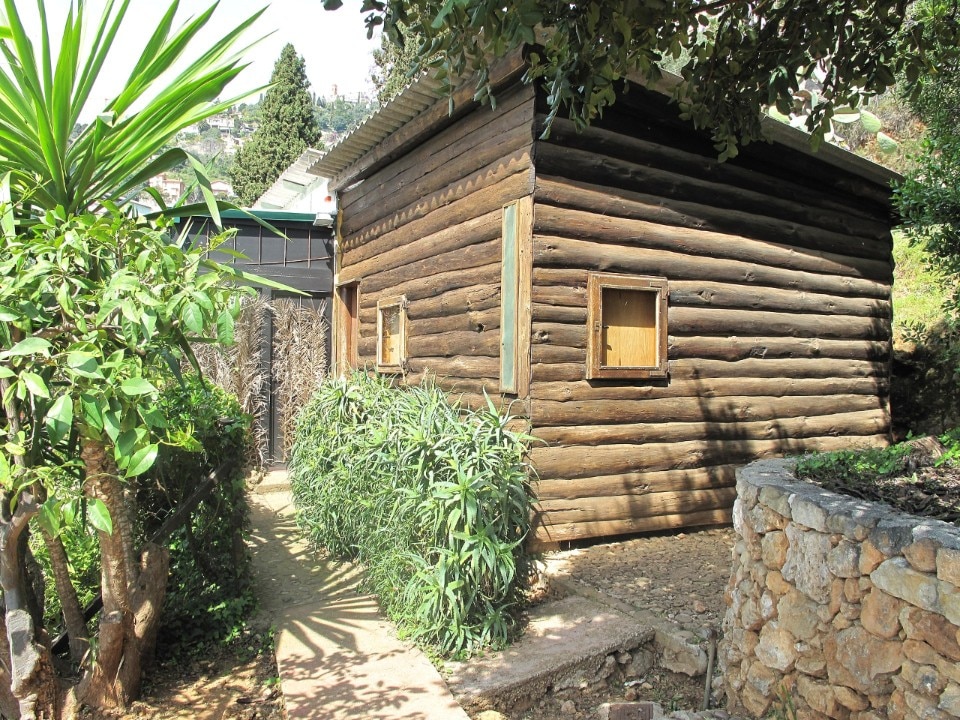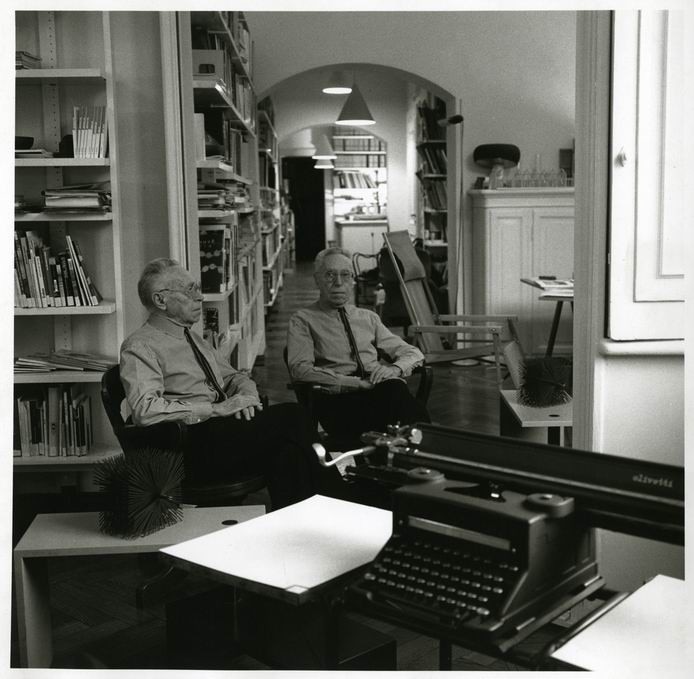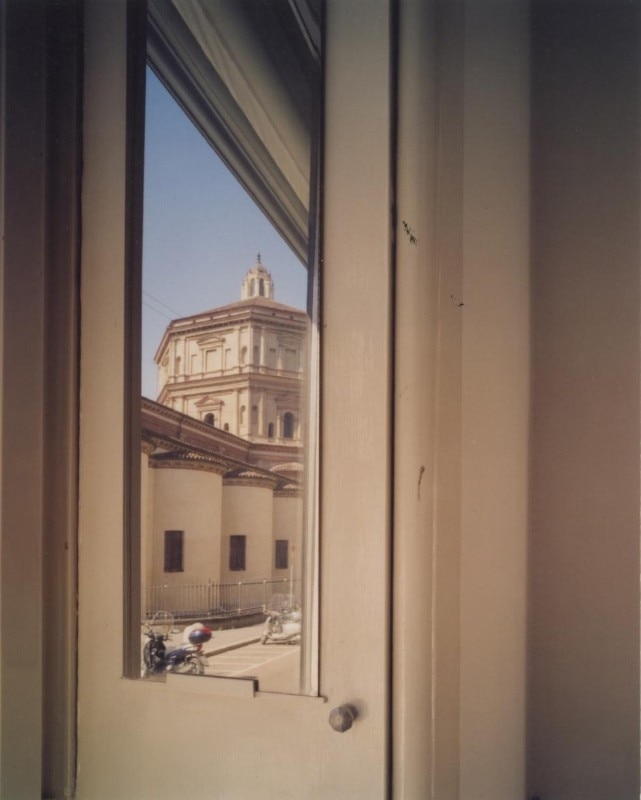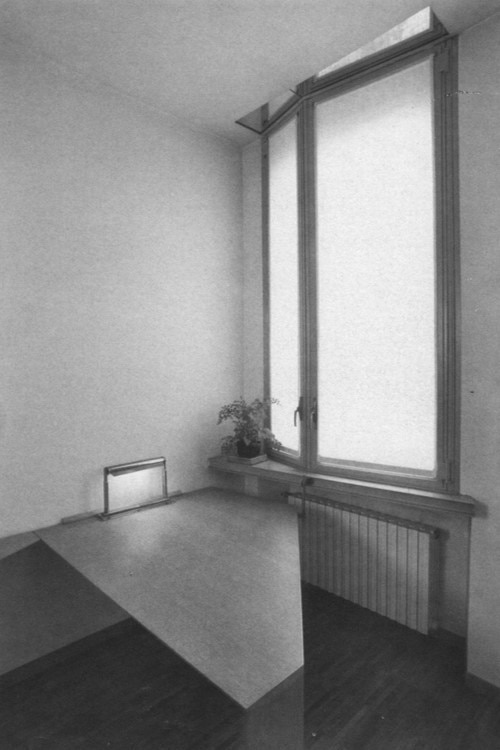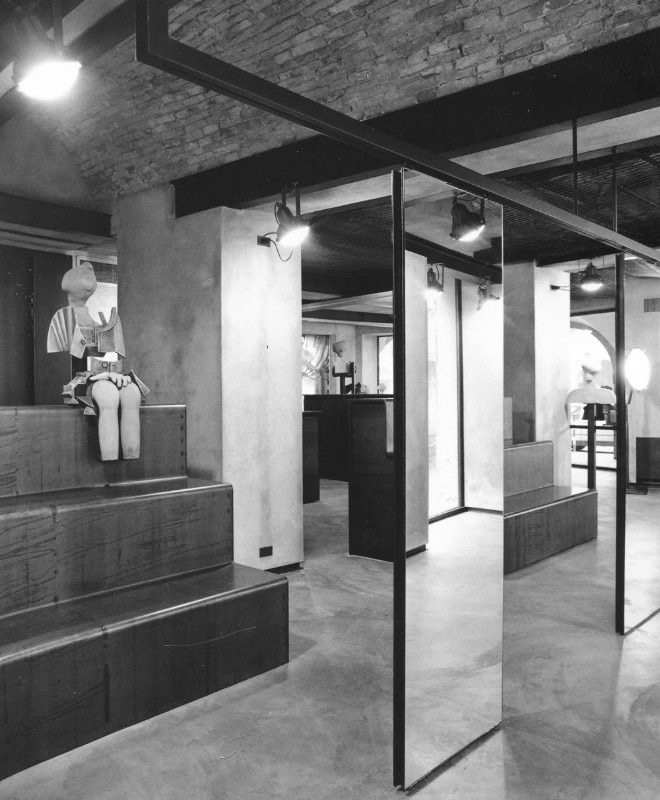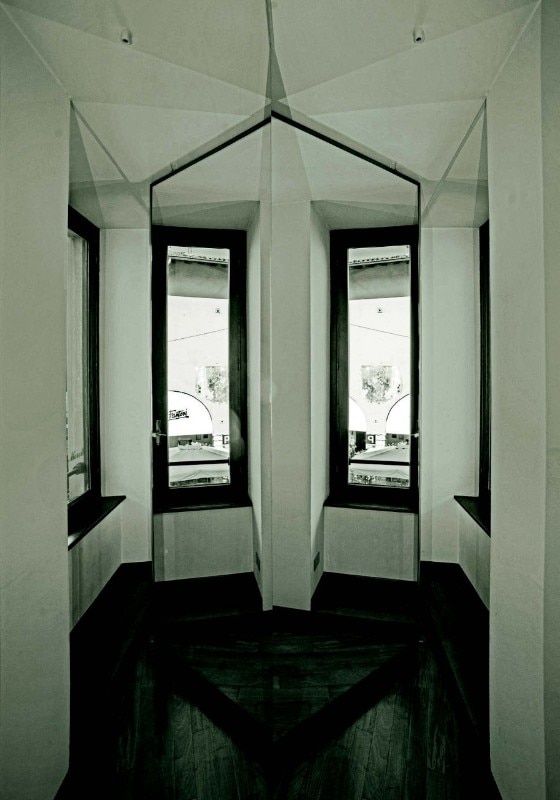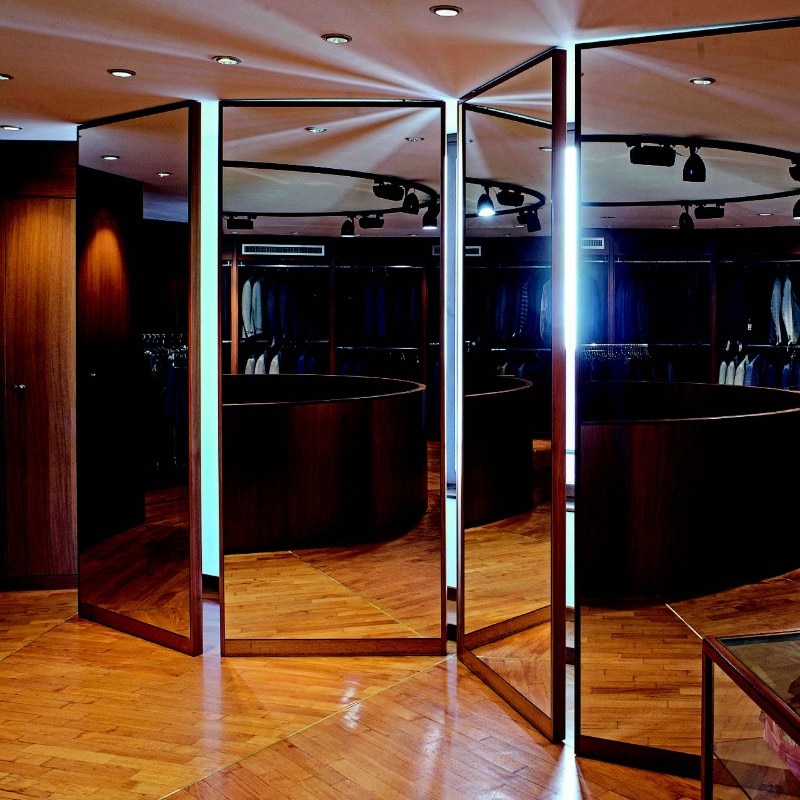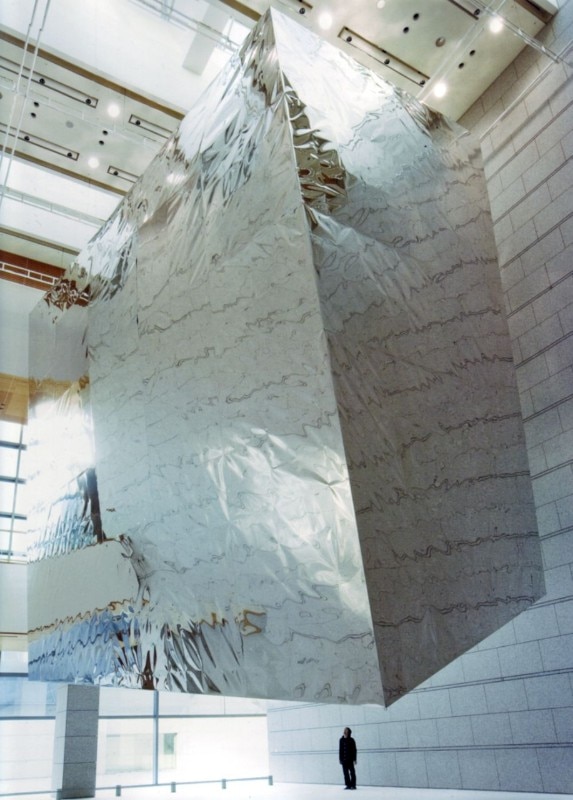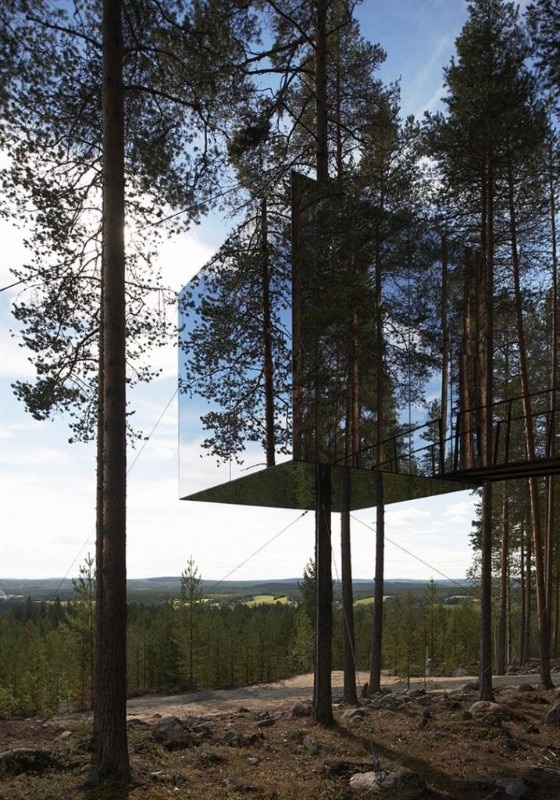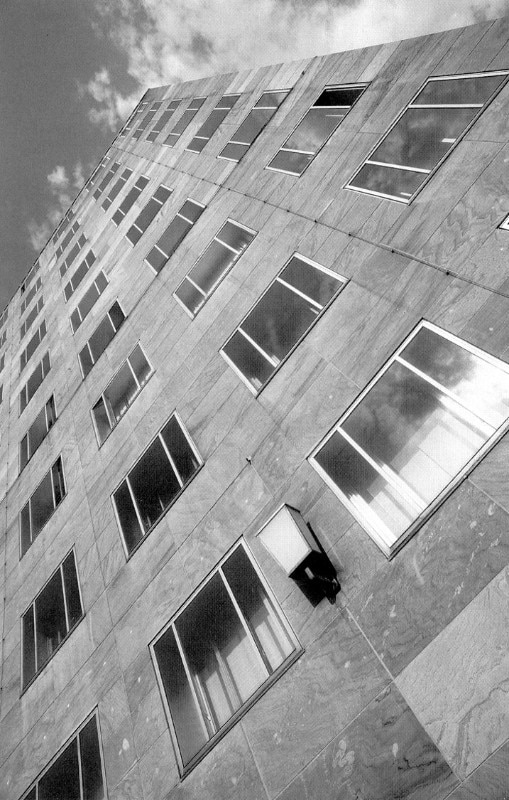Listening work for reading: Arvo Pärt, Spiegel Im Spiegel, 1978
The object-non-object of this reflection could also be defined as a simple gray surface, because of the silver it derives from, which always remains, seemingly, as an anonymous but attractive glimpse of a place where, however, visual short-circuits and spatial tricks occur if you look at it closely.
We have reached the final chapter of a discussion of sophisticated arguments suggested by Lorenzo Damiani regarding the primary substances of design, among material, type, structure, and surface, which started from the wood, passed by chairs, then by air as a building material and now reached the mirror, as a design surface capable of ideally and visually housing all other surfaces it temporarily faces as well. It can be considered almost an anti-surface, which has no image and can take any other.
The object-non-object is also object-without-image, despite the fact that it is the object that most produces images. The image reflected in the mirror is unique and there is only a person who is able to see it, because all other people looking at the same mirror at the same time would see it from another perspective, so they would see other things, other spaces reflected.
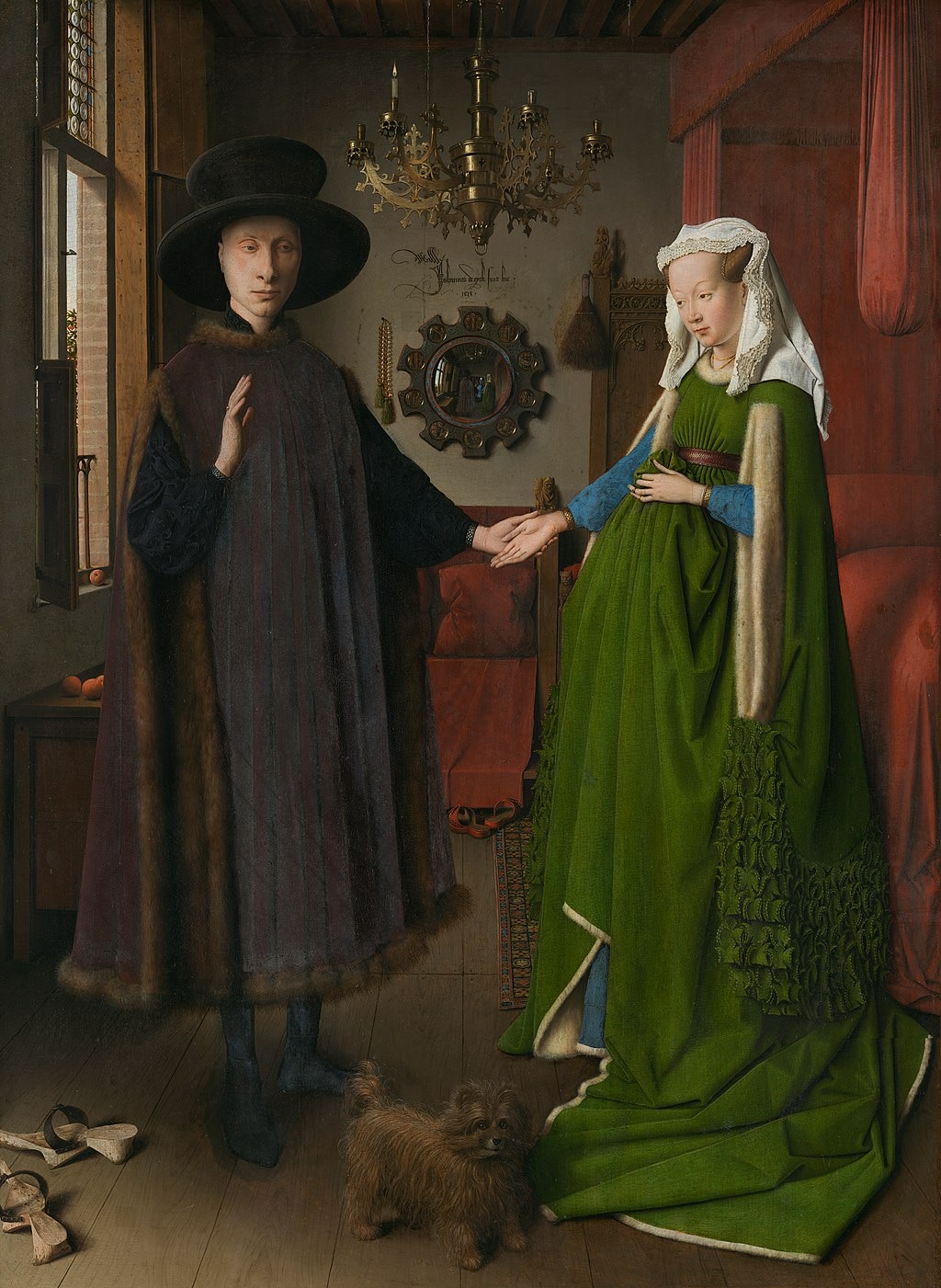
 View gallery
View gallery
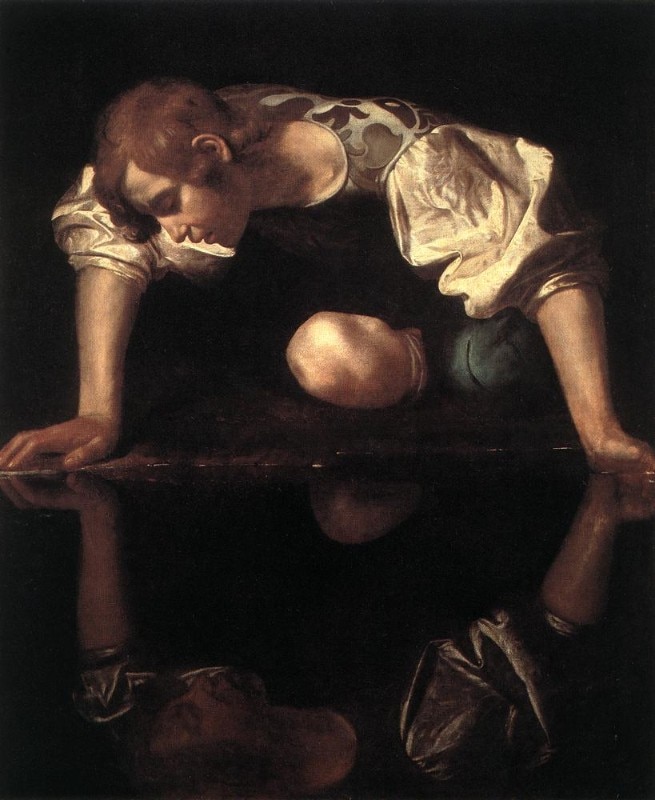
Michelangelo Merisi, Caravaggio, Narcissus, 1597/99, National Gallery of Ancient Art at Palazzo Barberini, Rome
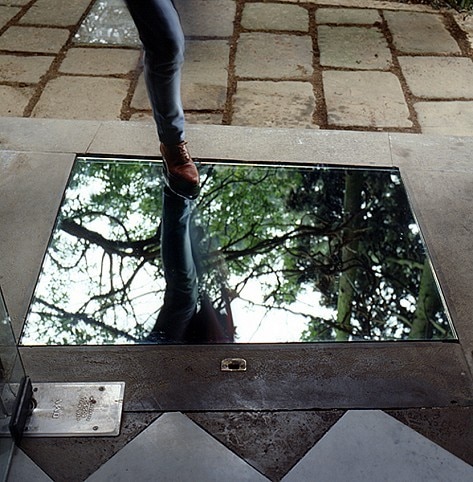
Maurizio Cattelan, Untitled (Zerbino-Specchio), Casa Leggeri, Trescore Balneario (Bg), 1995 (ph. Armin Linke)

Michelangelo Merisi, Caravaggio, Narcissus, 1597/99, National Gallery of Ancient Art at Palazzo Barberini, Rome

Maurizio Cattelan, Untitled (Zerbino-Specchio), Casa Leggeri, Trescore Balneario (Bg), 1995 (ph. Armin Linke)
In addition, the mirror is usually an ideally backless object, often standing on a wall, reasoning by means of super-surface and speaking by means of virtual space.
Originally and in nature, only water surfaces suggested a reflected image, and the history of artifacts for human evolution features objects with mirrored surfaces as far back as ancient times but exclusively reserved for Pharaohs, Kings and Emperors or people of magic.
The mirror has a “magical” surface that has always fascinated everyone, including artists. Ancient myths have also dealt with it, let us simply mention the stories of Narcissus, Medusa or Basilisk, which in different ways refer to mirrors as attractive, defensive or destructive surfaces. Not to mention contemporary myths, i.e., fairy tales, such as “Through the Looking Glass” (and what Alice found there) or “Snow White” and Queen Grimhilde’s famous “magic mirror on the wall”.
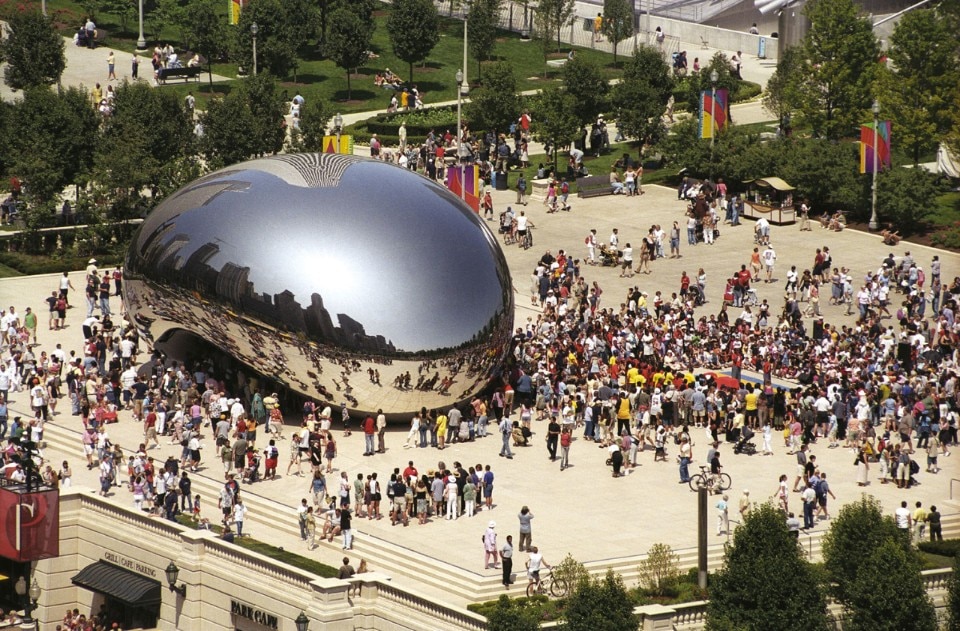
Moving closer to design and artifact making, involving technical production between Venice and Bohemia, prototypes of the mirrors that are still produced today were born and slowly spread in the 15th century, with flat sheets of glass on which a very thin reflective metal foil is applied.
The diffusion of mirrors marks a particularly important step in becoming aware of self-image and as the first and ongoing daily opportunity to identify or disown yourself.
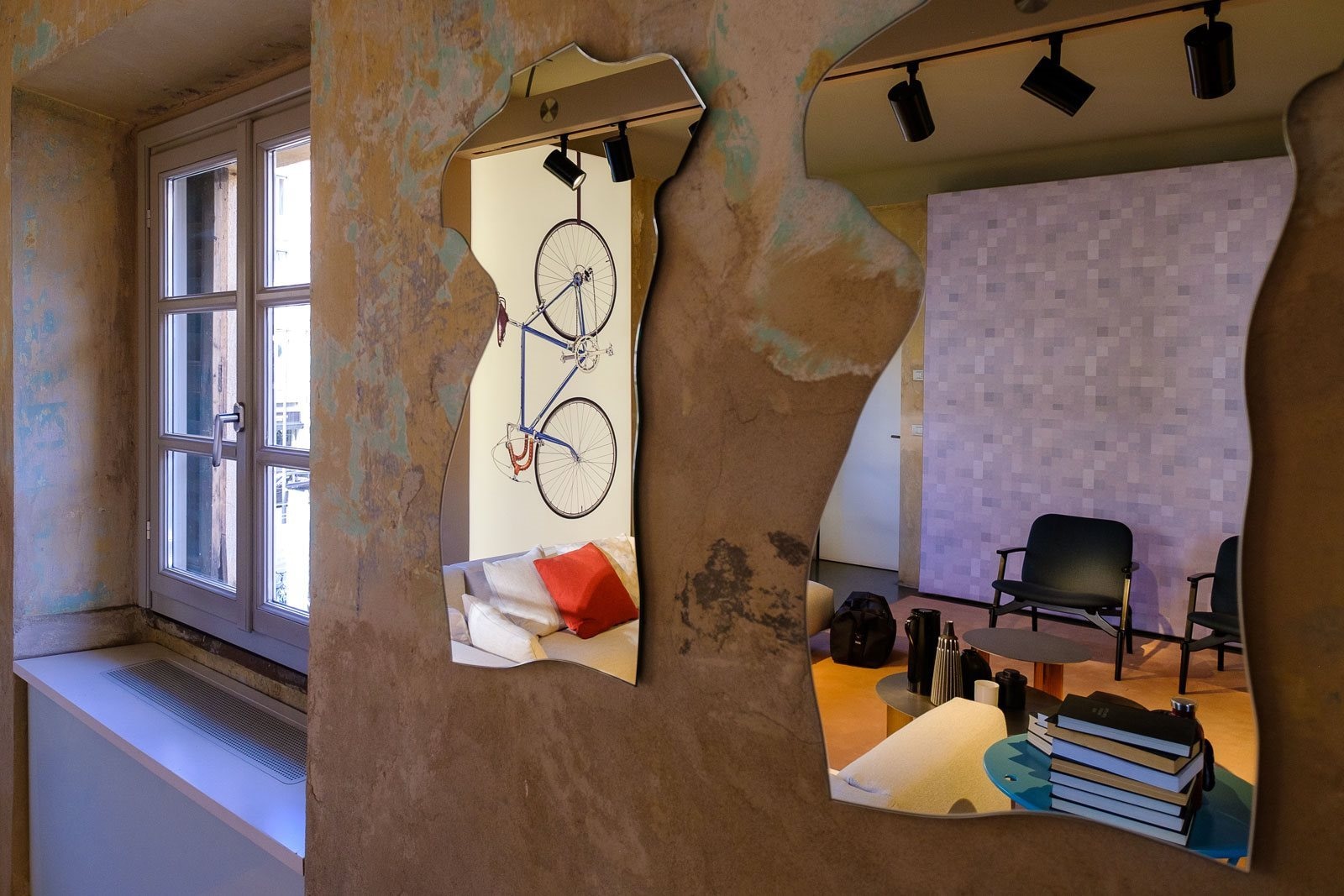
 View gallery
View gallery
The mirror gave every individual, until then merely subjects, the opportunity to realize themselves in their own “image and likeness”, and is thus simultaneously the object of virtue (with self-knowledge) and perdition and vanity (leading to lust). On the other hand, today we all have to deal with that “black mirror” that we keep in our pockets and that through selfies represents the new frontier of the contemporary action of mirroring ourselves or seeing ourselves again and recognizing ourselves, no longer just between self and self, but between self and (social) society.
Going back to the mirror as an object-non-object, every day in our homes it often marks the various moments of the day, just after waking up and just before sleeping, before going out, when we do not feel well or when we feel in love.
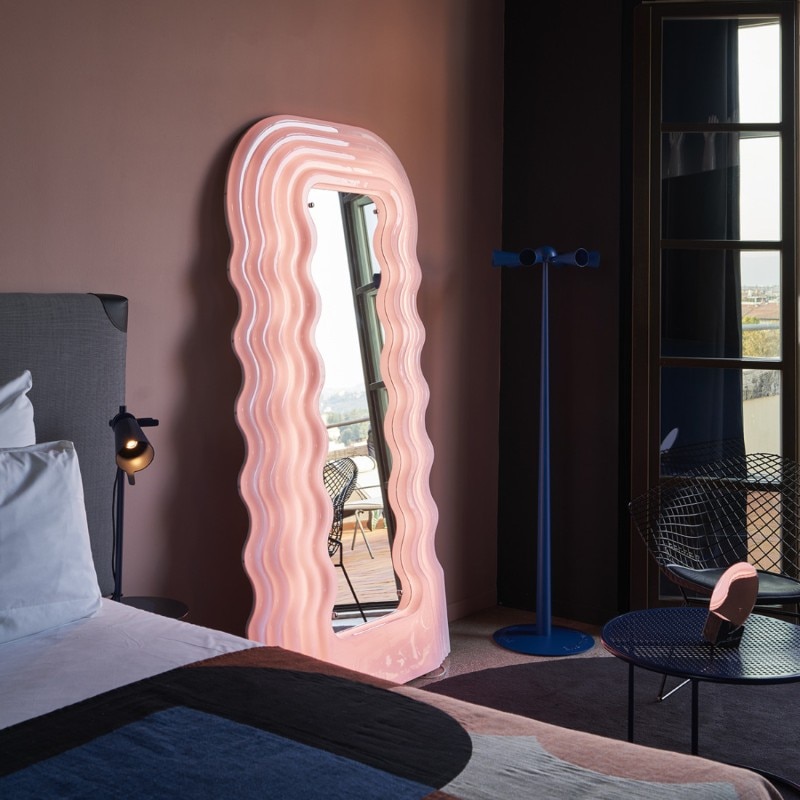
The mirror is usually used to look at yourself and not to look at anything else, although exceptions of spatial orienting or disorienting use of such a surface are quite common in architecture.
It is essential to keep in mind that this surface, when flat, hints at an inverted virtual reality, a reverse reflection. This becomes clear when reading the lettering on the hoods of emergency vehicles, where, with an absolute, radical, and enduring graphic idea, the lettering results mirrored to be read immediately “straight” in the rearview mirrors, while driving and one must immediately stop to give way.
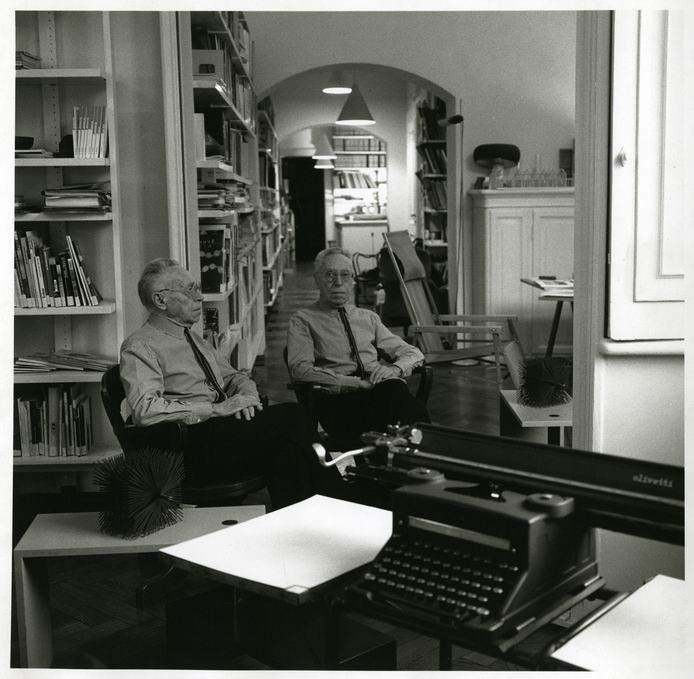
 View gallery
View gallery
If, on the other hand, the surface is even slightly concave or convex, it distorts reality up to the point of making it unrecognizable. Especially if concave, the surface has a lenticular effect that, when placed under sunlight, gave rise in the past to burning mirrors used as laser weapons and today more peacefully to solar kitchens used as food preparation tools.
Finally, the mirror offers a surface for covering up as well: entire facades that try to blend in or mirrored glass windows that reflect the sky (Gio Ponti’s design for the Montecatini Palace in Milan, 1938, is memorable), or mirrored surfaces used for technological screens that fade away letting other images usually television or photographic ones be seen, all the way to mirrored sunglasses that permanently conceal our gaze, protecting it, freeing it, and distracting our observer.
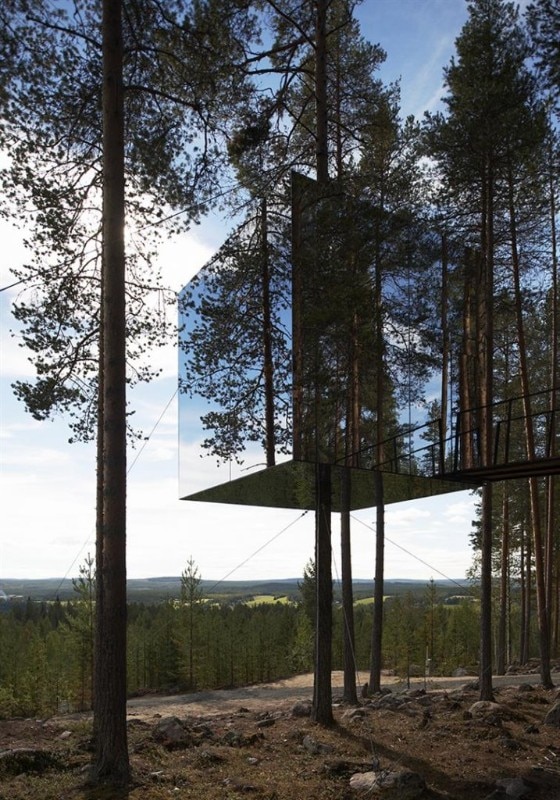
Perhaps too easy but also too cool to “speculate” on this type of object.
Among design and arts, many authors have designed exemplary projects in which, as with light design in which the main subject is the quality of light beyond the quality of the medium, the surprise of vision between surface, space and frame is always the key to interpreting the work.
We therefore refer to the various “mirror gallery” where the discussion could continue with other forward-looking and kaleidoscopic seamless reflections.
*Mai rimiriam, the title of this article, is deliberately palindromic: in it the first part of the text is mirrored and inverted becomes the second part with full meaning.


